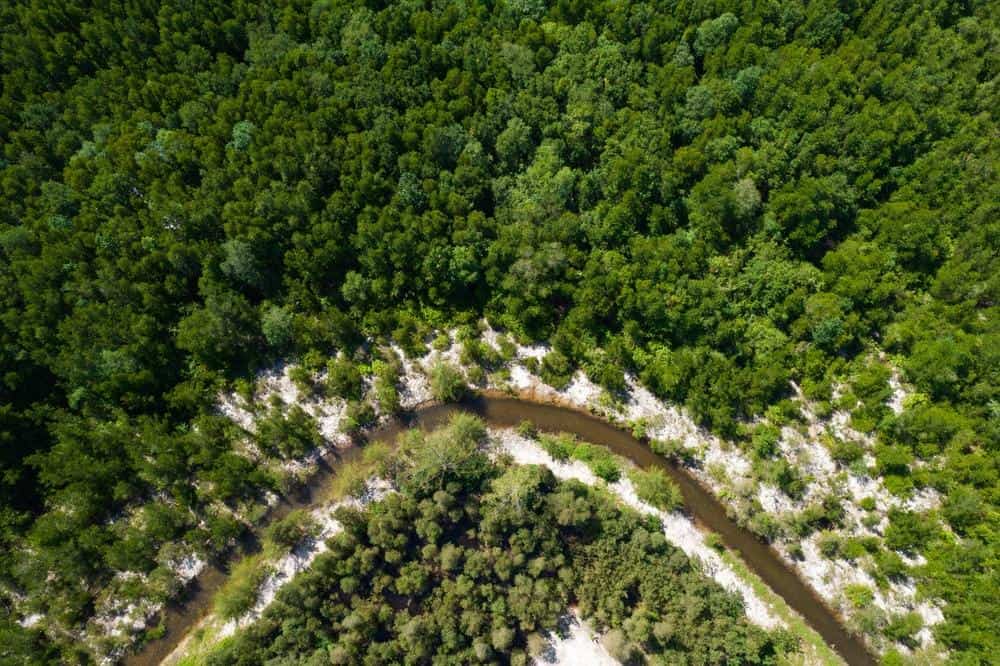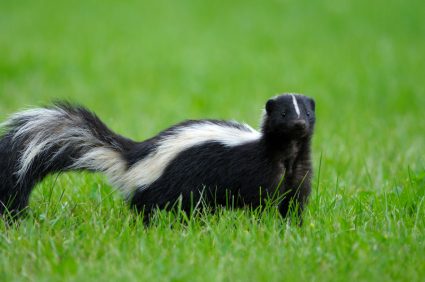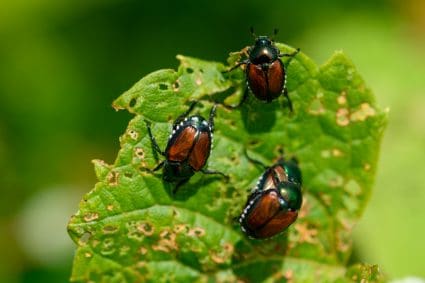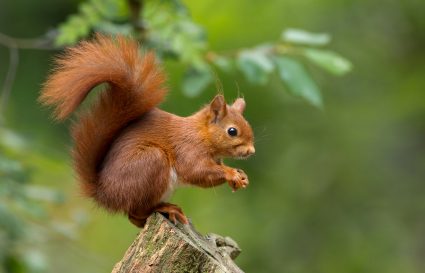
Skunks, known for their distinctive black and white fur and potent defensive spray, are adaptable creatures that inhabit a wide range of ecosystems across the Americas. From the hot deserts of the Sonoran region to the temperate rainforests of Oregon, skunks have evolved to thrive in diverse climates and habitats.
Skunks live in a variety of ecosystems across North and South America, including deserts, forests, mountains, grasslands, and even urban areas. They typically make their homes in abandoned burrows, hollow logs, woodpiles, or brush piles. Skunks have also been known to inhabit human-populated areas, often taking shelter under porches, in sheds, or in dark enclosures around homes.
Natural Habitats of Skunks
Skunks are found across North and South America, with the striped skunk (Mephitis mephitis) being the most common species found throughout North America. Skunks can adapt to various habitats, primarily inhabiting deserts, forests, and mountains. They are also found in forest edges, woodlands, grasslands, and open prairies. Skunks typically make their homes in abandoned burrows, hollow logs, woodpiles, or brush piles. Due to the availability of food and water, skunks can thrive in both rural and urban areas, often living in close proximity to humans. In urban and suburban environments, skunks may seek shelter under porches, in sheds, or in dark enclosures around homes.
Adaptation to Environment
Over time, skunks have evolved several adaptations that allow them to survive in diverse habitats. Their distinctive black and white fur serves as a warning to potential predators, while their highly evolved musk glands produce a strong-smelling fluid used as a defensive weapon. Skunks also have a flexible diet, feeding on a wide range of food sources depending on the season and availability. They have long, sharp claws that help them dig holes for burrowing and finding insects to eat. Skunks are primarily nocturnal, which helps them avoid many predators and find food more easily.
Skunks and Human Habitats
While skunks are native to the wild, they have also been known to thrive in human-populated areas. The abundance of food in urban and suburban environments can attract skunks, leading them to take shelter under porches, in sheds, or in dark enclosures around homes. This close proximity to humans can sometimes lead to conflict, especially when skunks use their defensive spray. However, it’s worth noting that skunks are generally mild-tempered and will only use their spray when cornered or threatened.
Threats and Predators
Despite their strong defense mechanisms, skunks face several threats in their natural habitats. Predators such as coyotes, red foxes, cougars, bobcats, and great horned owls pose a risk to skunks. Additionally, human activity such as habitat loss, fragmentation, and changes in land use can also impact skunk populations.
Conclusion
Understanding where skunks live in the wild can help us appreciate these unique creatures and the important roles they play in their ecosystems. Despite their reputation, skunks are beneficial to farmers, gardeners, and landowners because they feed on a large number of agricultural and garden pests. With their adaptability and distinctive characteristics, skunks continue to thrive in diverse habitats across the Americas.
To learn more about skunks and their habitats, check out [link to more information about skunks]. Remember, if you encounter a skunk in the wild, give it space and respect its role in the ecosystem.
Frequently Asked Questions
What do skunks eat?
Skunks have a diverse diet. They are omnivores, which means they eat both plant and animal materials. They primarily feed on insects, small mammals, fish, crustaceans, fruits, nuts, and plants. Skunks are also known to eat eggs and chicks of ground-nesting birds.
How long do skunks live?
In the wild, skunks typically live for about 2 to 4 years. However, in captivity, they can live up to 10 years due to the absence of predators and access to consistent food and medical care.
What is the purpose of a skunk’s spray?
A skunk’s spray is a defense mechanism. When threatened, skunks can release a strong-smelling fluid from their anal glands. This fluid is not only foul-smelling but can also cause temporary blindness and irritation if it gets in a predator’s eyes. Skunks will typically give warning signs before spraying, such as hissing, stamping their feet, and raising their tail.
Are all skunks black and white?
Most skunks are black and white, but not all. The striped skunk, which is the most common species in North America, is typically black with a white stripe or stripes. However, there are other species of skunks that may be brown or gray, and some even have spots instead of stripes.
Do skunks hibernate?
Skunks do not hibernate, but they do significantly reduce their activity during the winter. They may stay in their dens for several weeks at a time, living off their fat reserves. However, they will occasionally venture out on warmer days to find food.












